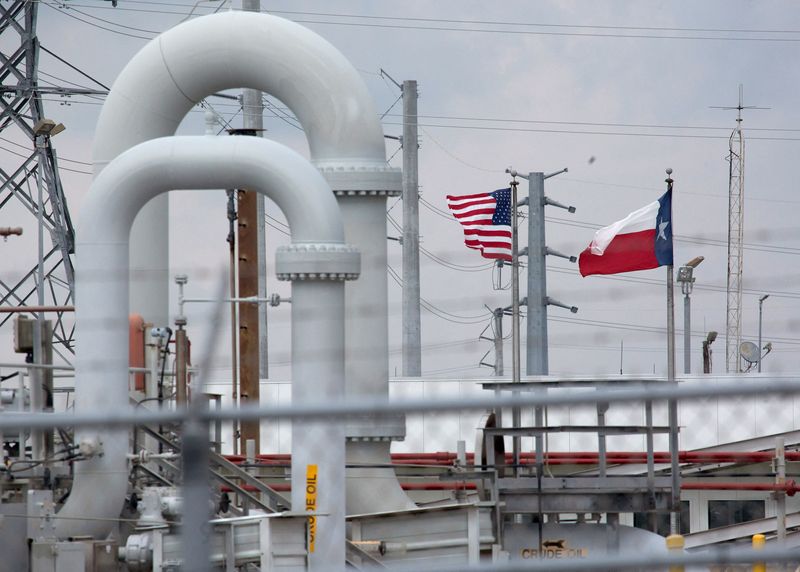By David Gaffen
(Reuters) - U.S. crude stocks surged by more than 9 million barrels, in part due to releases from the nation's strategic reserves, while gasoline and distillate inventories fell last week, the Energy Information Administration said on Wednesday.
Crude inventories rose by 9.4 million barrels in the week to April 8 to 421.8 million barrels, far surpassing analysts' expectations in a Reuters poll for an 863,000-barrel rise. Commercial stocks could keep rising in coming weeks as the United States is steadily releasing barrels from its strategic reserves to offset the expected shortfall from Russian exports.
"The sizable crude oil inventory rise is probably the number one thing," said John Kilduff, a partner at Again Capital LLC in New York. "But the concomitant drops in gasoline and distillate fuels offsets what would otherwise be a bearish input from the crude number."
The United States will release 180 million barrels from its reserves over the next six months to try to quell rising prices due to a shortfall from Russia after that nation invaded Ukraine in February. Russia is the world's second largest exporter behind Saudi Arabia, with daily shipments of 4 to 5 million barrels of crude.
Analyst estimates for the shortfall vary, but are anticipated to fall between 1 and 3 million barrels a day. U.S. production is rising, but it will not grow swiftly enough to offset all of those losses. On Tuesday, the U.S. Energy Information Administration estimated that U.S. output will grow by 820,000 barrels per day to 12.01 million bpd in 2022.
U.S. gasoline stocks fell by 3.6 million barrels, compared with expectations for a 388,000-barrel drop.
Distillate stockpiles, which include diesel and heating oil, fell by 2.9 million barrels to 111.4 million barrels, lowest since 2014.

Inventories of diesel and jet fuel have been shrinking due to strong overseas demand and steady economic activity. This week product exports rose to 6.8 million barrels a day, an all-time record.
Refinery crude runs fell by 425,000 barrels per day and refinery utilization rates fell by 2.5 percentage points to 90% of overall capacity.